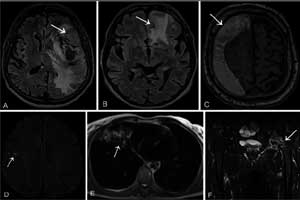- Home
- Editorial
- News
- Practice Guidelines
- Anesthesiology Guidelines
- Cancer Guidelines
- Cardiac Sciences Guidelines
- Critical Care Guidelines
- Dentistry Guidelines
- Dermatology Guidelines
- Diabetes and Endo Guidelines
- Diagnostics Guidelines
- ENT Guidelines
- Featured Practice Guidelines
- Gastroenterology Guidelines
- Geriatrics Guidelines
- Medicine Guidelines
- Nephrology Guidelines
- Neurosciences Guidelines
- Obs and Gynae Guidelines
- Ophthalmology Guidelines
- Orthopaedics Guidelines
- Paediatrics Guidelines
- Psychiatry Guidelines
- Pulmonology Guidelines
- Radiology Guidelines
- Surgery Guidelines
- Urology Guidelines
Incidental imaging findings in breast lead to highest malignancy detection

Computed tomography of the chest, computed tomography colonoscopy, and cardiac MRI scans have the highest prevalence of incidental abnormalities (incidentalomas), according to the results of the systematic review published in the journal The BMJ. The study found that breast incidentalomas had the highest rate of malignancy, whereas brain and adrenal incidentalomas had notably low rates of malignancy
Jack W O’Sullivan and his associates did an umbrella review of systematic reviews to provide an overview of the evidence on prevalence and outcomes of incidental imaging findings.
The investigators conducted systematic reviews and meta-analyses of observational studies that gave a prevalence of incidental abnormalities. An incidental imaging finding was defined as an imaging abnormality in a healthy, asymptomatic patient or an imaging abnormality in a symptomatic patient, where the abnormality was not apparently related to the patient’s symptoms. Primary studies that measured the prevalence of incidentalomas in patients with a history of malignancy were also considered in sensitivity analyses.
20 systematic reviews were identified from 7098 references from the database search. Fifteen systematic reviews provided data to quantify the prevalence of incidentalomas, whereas 18 provided data to quantify the outcomes of incidentalomas (13 provided both).
Read Also: Ultrasound helmet for ultrasound imaging of the brain
Key findings:
- The prevalence of incidental abnormalities varied substantially between imaging tests; it was less than 5% for chest computed tomography for incidental pulmonary embolism in patients with and without cancer and whole body positron emission tomography (PET) or PET/computed tomography (for patients with and without cancer).
- Conversely, incidental abnormalities occurred in more than a third of images in cardiac magnetic resonance imaging (MRI), chest computed tomography (for incidentalomas of thorax, abdomen, spine, or heart), and computed tomography colonoscopy (for extra-colonic incidental abnormalities ).
- Intermediate rates occurred with MRI of the spine (22%) and brain (22%).
- The rate of malignancy in incidentalomas varied substantially between organs; the prevalence of malignancy was less than 5% in incidentalomas of the brain, parotid, and adrenal gland.
- Extra-colonic, prostatic, and colonic incidental abnormalities were malignant between 10% and 20% of the time, whereas renal, thyroid, and ovarian incidental abnormalities were malignant around a quarter of the time.
- Breast incidental abnormalities had the highest percentage of malignancy (42%).
The authors concluded that there is large variability across different imaging techniques both in the prevalence of incidental abnormalities and in the prevalence of malignancy for specific organs. According to the authors, the umbrella review will help clinicians and patients weigh up the pros and cons of requesting imaging scans and will help with management decisions after an incidentaloma diagnosis.
For reference log on to https://www.bmj.com/content/361/bmj.k2387

Disclaimer: This site is primarily intended for healthcare professionals. Any content/information on this website does not replace the advice of medical and/or health professionals and should not be construed as medical/diagnostic advice/endorsement or prescription. Use of this site is subject to our terms of use, privacy policy, advertisement policy. © 2020 Minerva Medical Treatment Pvt Ltd